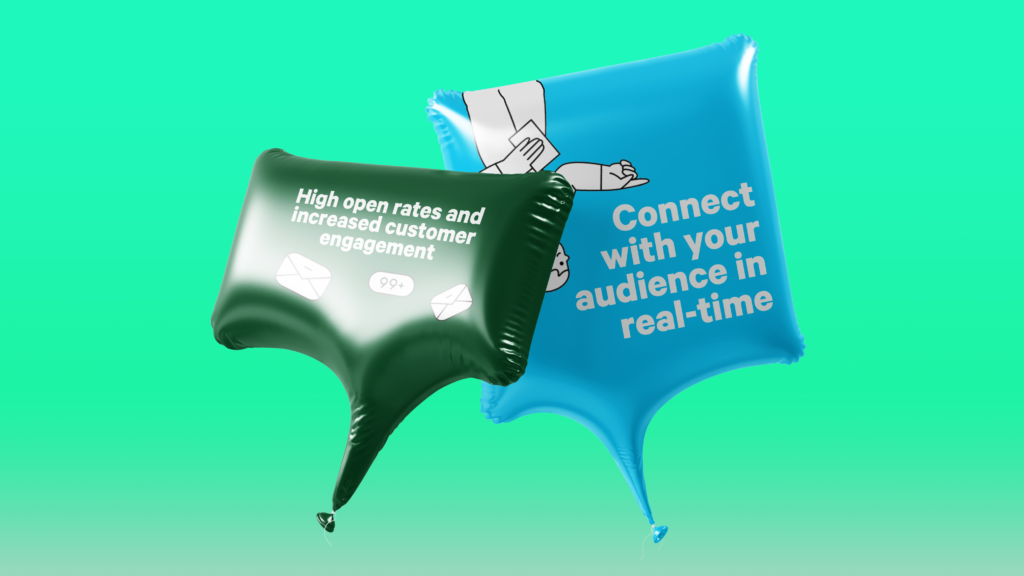The Basics of SMS Marketing
Welcome to the world of SMS marketing! In today’s digital era, where smartphones are a constant companion, SMS marketing provides a unique opportunity for businesses to engage with customers in real-time.
With high open rates and increased customer engagement, SMS marketing can be a very powerful tool for building stronger relationships with your customers.
But before we dive into the many ways you can use SMS marketing to connect with your audience, let’s take a moment to talk about best practices.
What is the best practice in SMS marketing?
Understanding the best ways to approach your SMS marketing campaign to better target your audience will result in optimal outcomes for you and your business.
Opt-in, opt-out
First and foremost, when it comes to SMS marketing, remember that opt-in is key.
Just like with email marketing, you don’t want to send messages to customers without their consent. A great way to gather opt-in confirmation is through a landing page form fill, or by offering discounts as an incentive for subscriptions.
And don’t forget about opt-out — always make sure a clear opt-out option is available and visible in all of your SMS marketing communications.
Segment your audience
One of the biggest advantages of SMS marketing is its ability to reach the right people at the right time. By segmenting your audience based on factors like demographics, purchase history, and behaviour, you can ensure that your messages are tailored to the specific needs and interests of each group.
A strategically segmented audience can increase the effectiveness of your campaigns, and make your customers feel more engaged.
Timing is everything
Timing is everything when it comes to SMS marketing. Because SMS is a direct and immediate form of communication, it’s important to be mindful of the best times to send messages to your audience.
Consider the recipient’s time zone and schedule, and make note of the best response times to strategise your send times. The last thing you want is to wake your customers up in the middle of the night or catch them when they’re the least interested in engaging!
Keep it short and sweet
With so many notifications buzzing at every second, you want to ensure you can capture your recipient’s attention and get your message across quickly.
To achieve this, try to keep your messages concise and attention-grabbing without overcrowding their text box.
Identify yourself
Be sure to clearly state who you are or the company you represent in every SMS you send.
Recipients are naturally wary of spam messages, so it’s important to build trust from the start with an intentional introduction.
Make it personal
Personalisation is another important aspect of SMS marketing.
By using a customer’s name, location, or purchase history in your messages, you can create a more customised experience that will help build stronger relationships with your customers.
Personalisation can also increase the chances that customers will engage with your message and take the desired action (such as making a purchase or booking an appointment).
Be mindful of privacy
Building trust is key, so be mindful of data privacy concerns and avoid asking for personal information where possible — especially transactional information like credit card details.
SMS marketing should be informational rather than transactional. The goal is always to offer value to your customer base to create a relationship of trust.
Always optimise
Like any marketing channel, SMS marketing requires testing and optimisation to achieve the best results. In an ideal world, this should include testing different message formats, subject lines, and CTAs, as well as experimenting with different send times and segmentation strategies.
By constantly testing and optimising your campaigns, you can learn what works and what doesn’t, and ultimately make data-driven decisions that will help you improve your results over time.
Integrate with other channels
It’s important to remember that SMS marketing is just one piece of the puzzle when it comes to engaging with customers.
To get the most out of your campaigns, it’s important to integrate SMS marketing with other channels — such as email, social media, and web push notifications. This can help you create a cohesive and consistent experience across all channels, and make it easier to track and measure the results of your campaigns.
Sum it up
Finally, include a snappy call-to-action (CTA) to drive engagement. Because SMS marketing is direct and immediate, your CTA should offer enough value to drive engagement rather than unsubscribes.
If you’re including URLs, use a URL shortener to stay within the 160-character limit.

How can I connect with customers via SMS marketing?
Now that we’ve covered the basics of SMS marketing and best practices, let’s talk about some of the ways you can use SMS marketing to connect with your audience.
One great way to use SMS marketing is to send birthday wishes to your customers. Not only is it a personal touch, but it also helps build stronger relationships with your customers.
You can also use SMS marketing to send special offers and promotions, appointment booking confirmations, appointment reminders, updates on delivery status, and abandoned cart deals.
The possibilities are endless!
SMS marketing: endless benefits
In conclusion, SMS marketing is a powerful tool for building stronger relationships with your customers. With high open rates and increased customer engagement, SMS marketing is a great way to connect with your audience in real-time.
By following best practices, such as opt-in, timing, and privacy, and by getting creative with the ways you use SMS marketing, you can build a loyal customer base and drive engagement.
